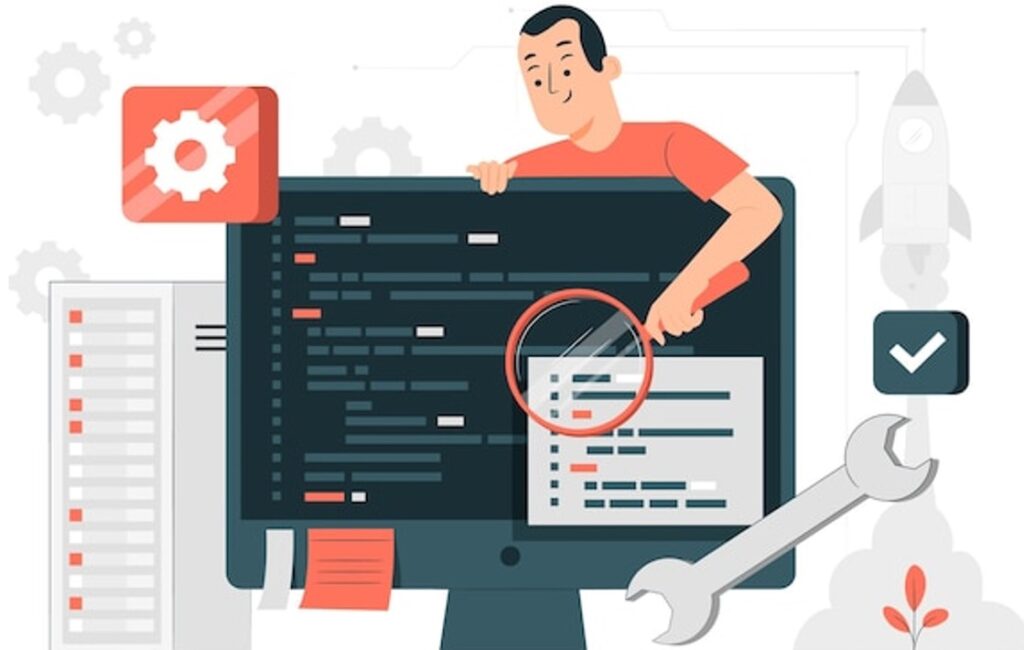Given the importance of software and technology in digital advancement, these significant changes include desktop or web applications. As a result, the application sector is gradually dominating the business industry. Thus, software testers play an essential role in this progress.
Software testers are experts who take part in the quality control phase of software development to make sure that applications and systems operate as intended. They carry out many duties, including developing and running test cases, identifying flaws, and others. A bug reporting best practices by QAwerk will assist teams in addressing the primary testing emphasis areas.
This article focuses on the whole scope of tester duties and the competencies they possess:
Tester’s Complete List of Skills
The statistics indicate that the application development software segment’s sales will reach US$166.20 billion in 2023 and rise at a rate of more than 7.12% per year by 2027. With that data, software testers are crucial in the development and perform multiple tasks to ensure app quality.
The tester’s skills and responsibilities are listed below.
Setting up Software Tests
Setting up the software tests incorporates three components: plan preparation, testing scenarios, and test cases.
Plan Preparation
It is the planning stage of the test’s primary goals. These are the essential elements to prepare:
- Project title
- References
- Criteria
- Metrics
- Examining the testing environment
- Vulnerability plan
- Any required management permissions, etc.
Test Scenarios
It describes the testing and the project’s high, medium, or low priority level. You must record the following details:
- Your tested module
- Scenario ID
- Describe the situation
- Significance of the situation
Test Cases
It describes the software testing procedure and test results. Typically, test cases include the following data:
- The scenario Identifier from the documentation for the test scenario
- Unique assessment scenario ID
- A concise explanation of the test
- A detailed list of the test’s steps
- Test data, and others.
Understanding of the Testing Procedure
In light of the following factors, software testers must choose the testing method and procedure that is most suitable:
- Duration of the testing phase
- Budget testing
- The type of business
- Application type
- Customer priorities
Knowledge of Programming Languages
Software testers must conversate in a standard programming language to interact more effectively with the IT department. Code coverage and other aspects of further automated testing all call for in-depth knowledge of programming techniques.
Creating a Report of Flaws
Creating app reports to comprehend software issues, known as bug reports, is essential.
Know SDLC
The plan testing cycle relies heavily on the software development life cycle (SDLC). For testing cycles to be successful, testers must comprehend the SDLC. Having a deeper awareness about it, they can better learn cognitive load in the future.
Agile Methodology
A tester should know the agile methodology as part of the task. It alludes to the process of organizing undertakings into manageable pieces. This paradigm encourages collaboration and flexibility in software testing. The teams are cross-functional, with daily communication between business units, software engineers, and testers.
Logical
Software testers must analyze the computer operations and results and then conclude the data. Although testers may not figure directly in testing reports, competent testers should be able to predict what must happen logically, given the situation at hand. In doing so, the tester can simplify complex systems and thoroughly understand the code. Additionally, it will support the creation of better test cases, increasing the system’s work effectiveness.
Test Automation for Software
A tester is skilled at conducting manual tests but also understands when and how to use automated testing procedures to increase productivity and cut costs.
Exploring the Technological Trends
Software testers need to know how emerging technologies may impact their company and its systems as technology evolves. It includes utilizing essential tools for testing and project management tools to collaborate seamlessly with the team and create an impactful product in the future.
Check for Cross-Browser Compatibility
Software testers must use cross-browser testing to ensure that systems work in various browsers and setups. This approach tests the app usability, performance, UX, and UI on any browser device to enhance user experience.
Familiarity with Test Management Tools
Test management expertise is essential to prevent errors from entering production. A tester may design test cases, meet test requirements, manage resources, and do a lot more with the aid of test management systems.
Business Mapping
While a software tester generally concentrates on a program’s technical components, a tester must understand how a company operates in an institution. Software testers can use this to apply the systems to their business and establish a pyramid of duties.
Tester’s Responsibilities
In the process of developing an app, testers are essential. They, therefore, have an outstanding obligation to provide a marketable app.
The following are the duties of a tester:
- Meet with the system’s users to determine the scope of initiatives
- Engage in collaboration with software engineers and project support personnel
- Jot down the demands of the business
- Plan tasks
- Observe software programs and applications
- Conduct functional, scalability, stress, and performance testing
- Testing
- Write test scripts and run them.
- Do manual testing and automation testing
- Test across several platforms, such as mobile and web
- Construct bug reporting
- Evaluate code
- Planning your resources
- Check the records
- Maintain a focus on project and organizational deadlines.
- Provide quality assurance
- Give software development teams unbiased feedback
- Troubleshoot and resolve issues
- Create tests to reduce risk
- Inform the software engineering and business user departments of the observations and findings.
- Visit several project locations to collaborate with the team if necessary.
- Working on several projects at once
- Document evaluation
- Communicate with project teams around the world
- Inform colleagues, both technical and non-technical, of discoveries.
Conclusion
Software testers will aid company applications in operating as planned and potentially lead to success.
A testing step should be a part of any software development life cycle. The absence of app testing may lead to problems with the app that could harm visitors’ or users’ experiences and, as a result, the reputation of the business or product.
Moreover, websites and online applications are crucial to test before the launch to ensure their high-quality and reliable performance.
The offered testing checklist will assist you in making sure your product fully complies with the standards, that you get everything, and that it passes the market standard.







0 Comments